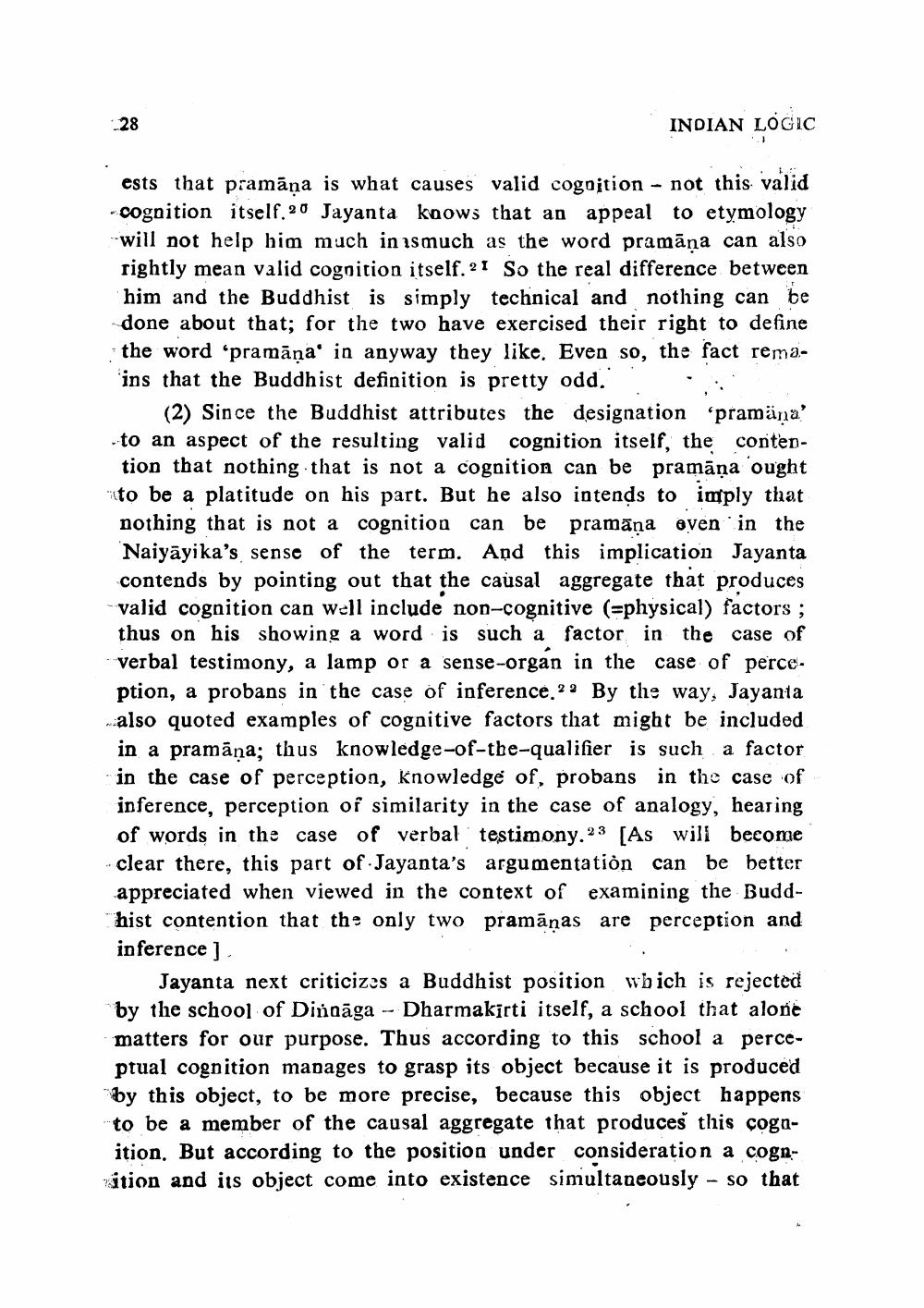________________
28
INDIAN LOGIC
ests that pramāna is what causes valid cogoition - not this valid cognition itself. 20 Jayanta kaows that an appeal to etymology will not help him much in ismuch as the word pramāna can also rightly mean valid cognition itself. 21 So the real difference between him and the Buddhist is simply technical and nothing can be done about that; for the two have exercised their right to define the word 'pramāņa' in anyway they like. Even so, the fact remains that the Buddhist definition is pretty odd.. ..
(2) Since the Buddhist attributes the designation (pramäna' - to an aspect of the resulting valid cognition itself, the conten
tion that nothing that is not a cognition can be pramāna ought to be a platitude on his part. But he also intends to imply that nothing that is not a cognition can be pramāna even in the Naiyāyika's sense of the term. Așd this implication Jayanta contends by pointing out that the causal aggregate that produces valid cognition can well include non-cognitive (=physical) factors ; thus on his showing a word is such a factor in the case of verbal testimony, a lamp or a sense-organ in the case of perception, a probans in the case of inference.2 By the way, Jayanta also quoted examples of cognitive factors that might be included in a pramāna; thus knowledge-of-the-qualifier is such a factor in the case of perception, knowledge of, probans in the case of inference, perception of similarity in the case of analogy, hearing of words in the case of verbal testimony.23 [As will become clear there, this part of Jayanta's argumentation can be better appreciated when viewed in the context of examining the Buddhist contention that the only two pramānas are perception and inference)
Jayanta next criticizes a Buddhist position wbich is rejected by the school of Dingāga - Dharmakirti itself, a school that alone matters for our purpose. Thus according to this school a perceptual cognition manages to grasp its object because it is produced by this object, to be more precise, because this object happens to be a member of the causal aggregate that produces this cogaition. But according to the position under consideration a cognration and its object come into existence simultaneously - so that




